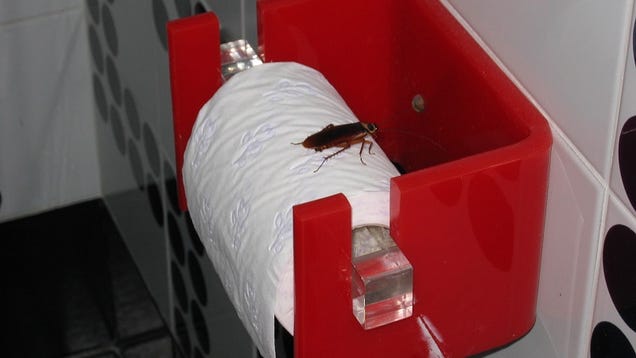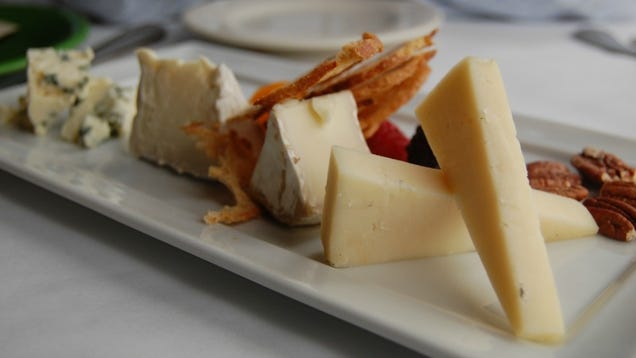
Engaging toys are great if you have a dog with endless energy you want to tire out, both mentally and physically. This DIY toy, on the other hand uses simple supplies and will keep your pet occupied for hours without much effort on your part.

Engaging toys are great if you have a dog with endless energy you want to tire out, both mentally and physically. This DIY toy, on the other hand uses simple supplies and will keep your pet occupied for hours without much effort on your part.
Jim Paullfood. with foodcat withno catStill noStillX
The internet has made researching a topic easier than ever before. Instead of making a trip to the library, people with internet access can simply pull up a search engine, type, and click away. But, in addition to making it easier to access information, the web has also made it easier to access misinformation.[1][2][3] However, by following some simple rules, you can avoid being fooled or misinformed by a phony, inaccurate, or biased web source.
Cite error: <ref> tags exist, but no <references/> tag was found
This year my youngest started full-time preschool and I went from packing his sister's five lunches a week to packing 10 lunches a week for both of them. I realized I could save time each morning (not to mention my sanity and some dishwashing) if I packed all 10 of those lunches at once. I started slowly, by packing three days at a time and working my way up to a full week of lunches packed in about an hour on Sunday. Here's what I learned and how I pack a week's worth of school lunches on Sunday.
The onset of fall brings with it a can-do attitude. Summer Fridays are a thing of the past, kids are back in school, and it's time to buckle up and get down to business. To help you maintain your focus and avoid being hangry in a professional setting, we've rounded up 10 snacks to stash in your desk drawer. They're basically guaranteed to help you make the transition from iced coffee to Pumpkin Spice Latte season with poise and dignity intact.
Banana cream pie and doughnuts are both wonderful on their own, but combine the two and you have something truly spectacular. Yes, these doughnuts are stuffed with banana pudding and whipped cream, and then garnished with crushed vanilla wafers. It's a mash-up you don't want to miss.

There are all kinds of home remedies for keeping your house pest-free
, and essential oils are a big player. If you want to repel some roaches, a little peppermint oil is surprisingly effective.
You might know that avocado is delicious on top of a salad or smeared on toast for breakfast, but that's not all this buttery kitchen hero can do. The next time you stumble upon cheap avocados, pick a few up and try one of these unique recipes. From adding avocado to macaroni and cheese, to turning it into crispy fries, these recipes unlock avocado's true potential.
Whipping up a hot breakfast from scratch in the morning — be it on leisurely weekends or busy weekdays — always sounds like a good idea, but sometimes it's difficult to make happen.
Well, these 25 recipes are here to jump-start things for you. If you prep, assemble, or even bake your breakfast the night before, you'll be left with minimal work when you wake up.
Jim Paull😂
Haha
Jim PaullHa

A potato chip dipped in some sort of creamy dairy product is one of the most satisfying snacks around, and Bon Appetit has taken the delicious duo to a whole new level with their chip and cheese pairing guide.

Of course, you would never let your tank get so low that the little light popped on warning you that you should really, really refuel, but if you did, this chart outlines exactly how much further you can expect to go on what little is left in the tank.
Jim PaullHaha, we were taught this in boot camp almost 30 years ago to the day. Think 26 Sep 86.

If you’re on a sinking ship or you fall overboard, and you don’t have a legitimate flotation device, it’s time for the pants to come off. This clever survival trick will help you float on the water so you use less energy while waiting for someone to rescue you.
Sunday afternoons are for meal prep and lunch-packing for the week ahead, but after dinner is made on Monday I take 10 minutes to do one tiny task that saves me time each morning. This task isn't critical, but it's just one more way to save time in the morning rush — can you guess what it is?
Here are six of the best photos that readers added to the Consumerist Flickr Pool in the last week, picked for usability in a Consumerist post or for just plain neatness.

Want to see your pictures on our site? Our Flickr pool is the place where Consumerist readers upload photos for possible use in future Consumerist posts. Just be a registered Flickr user, go here, and click “Join Group?” up on the top right. Choose your best photos, then click “send to group” on the individual images you want to add to the pool.

If your baking recipe requires some ripe bananas and all you have is some near-green ones, a few egg yolks can save the day.
Jim PaullSweet
When people think of robotics specialists, they don’t normally think of luggage makers. But San Fransisco-based company Cowarobot is most certainly both of those things.
At CES Asia earlier this year, the brand announced its first flagship product, the Cowarobot R1. Scheduled to ship in November 2016, the product sports minimalistic good looks and a feature your run-of-the-mill Samsonite would faint over — autonomous following with obstacle avoidance. Yeah, that’s straight out of The Jetsons.
Seriously, see it in action:

So, how does this thing follow you around? There’s an included wristband that looks like a fitness tracker and the R1 locks onto that. The handle packs all the fancy technology, which includes sonar for obstacles avoidance and a depth sensor so it’ll never tumble down a set of stairs. Translation: this thing can seriously see and handle anything.

With a follow rate of up to 4.5 mph, it’s far from being as fast as Usain Bolt, but it can still hang next to you with ease unless you hit traffic on the way to the airport and find yourself sprinting through the terminal like a mad man. There’s even an adaptive handle that lets you switch between autonomous and manual modes. The R1 also has other bells and whistles, like a secondary storage compartment so you can easily grab your Kindle or iPad, and an embedded GPS so you’ll never lose your gear.

One of the coolest features included in the R1 is its TSA-approved Co-Smart intelligent locks, where the aforementioned wristband can be used as a keyless remote. The smoothness of it all feels like it’s straight out of a James Bond flick. Also included is a portable power bank, a nice feature to have, but it’s pretty much standard issue with all modern luggage upstarts nowadays, so no biggie there.

Cowarobot isn’t the only one trying to get into the smart luggage game. NUA Robotics, an Israeli robotics company, is producing a similar solution, though they are roughly a year from going to market. Mashable went hands-on with their solution, which looks far less impressive from both a design and maneuvering standpoint than what Cowarobot is up to in Northern California.
Sure, robotic luggage that follows you around is a little ridiculous and you don’t really need one of these to travel well, but for anyone who ever hit an airport sans carry-on for a day trip realizes how relaxing it is to go completely hands-free when walking to your gate and snagging some fresh reads at the magazine stand. With the R1, you’ll get some strange looks, maybe some impressed glances, but ultimately it’ll likely boost your flying experience in unexpected ways.
You can still snag the R1 for a discounted $499 through Cowarobot’s Indiegogo campaign. The company has racked up more than $300,000 as of this writing with a November ship date on the calendar. After the pre-order window closes, the price will jump to an MSRP of $699 per bag.
Exciting times we live in. Next stop, levitating luggage?
Featured image courtesy of Cowarobot.
Chase Sapphire Preferred® Card |
| Intro APR | Regular APR | Annual Fee | Foreign Transaction Fee | Credit Rating |
| N/A | 16.24%-23.24% Variable | Introductory Annual Fee of $0 the first year, then $95 | 0% | Excellent Credit |
We all know the joys of make-ahead meals, but they truly feel like magic when Monday morning rolls around. They're the answer to a quick and ultra-satisfying weekday breakfast — like, one that tastes good and will actually carry you through lunchtime. All that can be yours when you keep these three key pointers in mind.
Jim PaullOoo

LONDON: British retailer Marks & Spencer plans to cut a net 525 jobs from its London head office, it said on Monday, as new Chief Executive Steve Rowe seeks to simplify the business and reduce costs.
The clothing and food group also plans to reduce the number of roles permanently based in central London by about 400 across its IT and logistics functions.
It said the planned reduction in jobs, which follows a review of M&S’s organisational structure, would be achieved through a combination of fewer contractors, natural attrition and redundancies for M&S employees. A formal consultation with affected staff will now begin.
“M&S has to become a simpler and more effective organisation if we are to deliver our plans to recover and grow our business,” said Rowe.
“M&S has become too complex and inefficient and today’s proposals aim to address this by removing duplication, driving accountability and establishing clear, consistent processes; which in turn will strip out unnecessary costs.”
Shares in M&S, down 29 percent over the last year, were down 0.7 percent at 352 pence at 1138 GMT.
Rowe, a 26-year M&S veteran who succeeded Marc Bolland as chief executive in April, has pledged to turn around M&S’s struggling clothing business by improving ranges and availability, cutting prices and offering fewer promotions.
However, his plan, outlined in May, came with a warning of a short-term dent to sales and profit and in July the 132-year-old group reported its worst quarterly clothing sales for a decade.
The proposed reduction in head office roles comprises existing vacancies, about 260 M&S roles and about 200 contractors.
M&S currently employs over 3,500 people working across seven UK head offices.
Its more than 71,000 staff in UK stores and supporting customer functions will not be affected by the proposed changes.
M&S said if the proposals go ahead they would deliver annualised operating cost savings of about 1 percent of the UK cost base.
Its cost growth guidance for the current 2016-17 fiscal year remains unchanged at about 3.5 percent.
However, there would be a one off cost of 15 million pounds ($20 million), which includes the changes to the senior management team Rowe announced in May.
The job cut plans come days after M&S announced a 14.7 percent pay rise for shop floor staff but cut premium pay for Sundays and changed the company’s pension scheme.
Rowe said in May M&S’s other big strategic issues, including the size of its UK store estate and international plans, would be addressed in the autumn.
Jim PaullMmm
The secret to successful stress-free mornings is a freezer-friendly breakfast burrito stash. Filled with eggs, cheese, and potatoes, frozen breakfast burritos heat up quickly and are filling enough to keep you going until lunchtime.
Preparing a dozen burritos to stock your freezer only takes about 30 minutes, and with a few smart details they will be as delicious on a hectic Monday as they were the day they were made.
Jim Paullgood Looks Look
Happy National Cheese Pizza Day! Yes, this beautiful food holiday happens to fall on Labor Day this year. If you're still looking for a crowd-pleasing appetizer for your holiday soirée, this pepperoni pizza dip is sure to be a hit.
Jim PaullHmmm. Something in common in that picture but I just can't put my finger on it.

KLANG: A group of women, who lost more than RM2.5 million to online scammers, have sought the help of Klang MP Charles Santiago in their efforts to seek justice.
One of the victims, who only wanted to be known as “Madam Wong” from Klang, told a press conference arranged by Santiago that she contacted an agent via Facebook, who promised her she could win big in a 4D number draw.
She was told that a “Datuk” could provide her with the winning numbers if she was willing to pay over RM4,300 to facilitate “prayer” sessions and rituals for it.
Later, the same agent told Wong she had struck it big with a RM960,000 win, but that the money had to be transferred to Thailand first, for a thanksgiving ceremony by a bigger “Datuk”.
Her real problems however began when the agent contacted her again, explaining that the man who was tasked to bring her winnings back into Malaysia had been detained by Thai police. The agent then instructed her to pay RM200,000 as a “processing fee” to secure the man’s release.
Still not suspecting anything amiss, Wong borrowed the money from loan sharks and paid the agent, never to hear from him again. Not only was she left with no prize money in hand, loan sharks are now after her for the money she borrowed from them.
Apart from Madam Wong, another case of online duping involved a group of women, who collectively lost RM2.2 million to a conman selling disposable diapers via Facebook.
One of the women, who only wanted to be known as Ayu, said they were promised good returns for selling the diapers, which they bought at a cheaper price, online.
The first three deals went without a hitch, with the women making some decent money. However, hungry for more easy money, the women invested between RM10,000 and RM50,000 with the agent in exchange for more diapers, which never was delivered to them. The agent also went missing.
A third victim, who wished to remain anonymous, said she was conned of her life savings of RM100,000 after believing the business promises of an “international financial agent”.
Santiago said that besides these cases, conmen had preyed on countless other women as well.
“The sad part is, some of them (victims of scams) invested money without their husbands’ knowledge,” Santiago said, urging police to speed up their investigations into the reports lodged by the three victims.
He said the phone numbers and bank account numbers of the conmen provided by the victims to the police should help the authorities trace the culprits.
Santiago also proposed the government set up a Financial Scams Asset Recovery Centre to help online scam victims recover lost money from agents and to create awareness of e-scams.
This centre, he said, should be headed by the Malaysian Communications and Multimedia Commission (MCMC), with assistance from Bank Negara Malaysia, the Domestic Trade, Cooperatives and Consumerism Ministry, the Attorney-General’s Chambers and the police.
Santiago also called for the Cyber Court, recently set up in Jalan Duta, to also have a presence in all states to assist online scam victims in their time of need.

It doesn’t matter how late you stay at the office
. Your manager is going to appreciate it you arrive early more, a recent study from the University of Washington concluded.
Jim PaullSame at raisins?
 SINGAPORE: A widening gap between Asia’s oil production and demand is creating a growing capital drain for the region and leaving countries vulnerable to global supply disruptions and a sudden surge in oil prices.
SINGAPORE: A widening gap between Asia’s oil production and demand is creating a growing capital drain for the region and leaving countries vulnerable to global supply disruptions and a sudden surge in oil prices.
Asia’s net oil imports surpassed the total amount of oil consumed in North America in 2015 and are set to rise after producers slashed spending on exploration and production on low oil prices, leaving oilfields at risk of sharp production declines in the next decade.
Activities across Asia-Pacific to search for energy resources have nearly ground to a halt in the past year while recent exploration finds have struck more natural gas than oil, analysts said.
As Asia’s net imports grow and crude prices recover, the region’s oil import bill is set to climb back above $500 billion in 2017 for the first time in three years, calculations based on forecasts by the International Energy Agency and a Reuters crude oil price poll in August showed..
“With demand growth set to continue and outpace declining domestic production, this leaves Asia increasingly vulnerable to rising prices,” said Energy Aspects analyst Virendra Chauhan.
Falling output
The oil price slump since mid-2014 had given Asian economies a breather from high import bills.
But oil demand in the Asia-Pacific is expected to grow by 800,000-900,000 barrels per day (bpd) this year and next, while the region’s output could shrink by 240,000-330,000 bpd during the same period, Chauhan said.
The gap between oil production and demand has jumped over 30 percent since 2010 to an estimated 25.7 million bpd in 2016 and is set to grow by another 1.1 million bpd next year. Rising oil prices, however, means the cost could soar by a third in just one year to $566 billion.
“We have seen two years in a row in 2015 and 2016 oil investments declining,” International Energy Agency (IEA) chief Fatih Birol said. “This would mean oil security and oil markets may face a challenge as a result of a huge drop in the investments in a very few years in the medium term.”
Producers across the region are struggling, which is not being helped by international oil companies’ capital and expertise leaving the region, said Chauhan.
Consultancy Wood Mackenzie expects Asia’s oil production to fall to 5 million barrels per day in 2025 from 7.6 million bpd in 2016.
“We’ve seen a number of projects delayed – some canceled – plus the level of investments in existing oil fields is falling,” Angus Rodger, director of Asia-Pacific upstream research at Woodmac said.
“That has a minor impact in the short-term, but if you go out to 2020, it means oil production across the region will have declined significantly.”
China is leading the decline, with output hitting a five-year low in July as producers shut-in marginal fields while imports hit a record.
Indonesian officials said they are looking at ways to shore up a production target of 780,000 bpd in 2017, the lowest since 1969 and 40,000 bpd lower than 2016’s forecast. “We are discussing how to make Cepu block production higher than now,” Director General of Oil and Gas Wiratmaja Puja said, adding that output at the oilfield operated by Exxon Mobil may increase by 15,000 bpd.
Indonesia, the largest oil producer in southeast Asia, faces a potential 20-25 percent natural decline in production unless it steps up activities such as drilling and well servicing, said Muliawan, deputy for operations at regulator SKK Migas.
Mideast supply impasse
China, Indonesia and India have been actively investing in overseas oil production assets to supplement domestic output.
China has also been broadening its sources of supply, taking more oil from Russia and Latin America to reduce its dependence on the Middle East, as well as building its strategic reserves to cushion itself in the event of an oil price shock.
The region’s biggest oil consumer is also turning to gas and renewable energy, but these are long-term solutions.
Asia imports just over half of its oil from the Middle East and will continue to rely heavily on Gulf producers, analysts said, exposing the region to geopolitical risks that have disrupted oil production and exports.
“Asian production is on the decline, notably among others in China, and with increases in refining capacity that are unlikely to remain idle, the dependency of the region to Middle Eastern oil will remain,” BNP Paribas Global Head of Commodity Markets Strategy Harry Tchilinguirian told the Reuters Global Oil Forum.
“It is, as you can imagine, hard to replace Saudi Arabia in your import mix for many an Asian refiner.”
Jim PaullYup.
Jim PaullMmmmm

Whenever I roast a whole chicken, I am most excited for two things: the skin and the fat. Not only is shmaltz a great cooking fat, it’s pretty good on bread, and Chef Katie Button has harnessed its greatness by whipping it with butter.
Jim PaullHahaha “Sarawak is a not a Muslim state. Foreigners (from Peninsular Malaysia) who work in the state should learn our culture before they come here. We respect them and they should respect us,” he said.
 KUCHING: Parents and local community leaders in Serian, Sarawak have criticised a principal of a local secondary school for barring students from wearing the cross, rosaries, crucifixes or other Christian symbols, even if they are worn under their uniforms.
KUCHING: Parents and local community leaders in Serian, Sarawak have criticised a principal of a local secondary school for barring students from wearing the cross, rosaries, crucifixes or other Christian symbols, even if they are worn under their uniforms.
A senior female student from SMK Serian was ordered to remove the cross she wore under her uniform while another student was ordered to remove a rosary that she wore that was also under her uniform.
“Besides that, the principal was said to have made an insensitive statement to the student by saying that instead of wearing the cross, it would be good for the student to go and carry one from the graveyard,” DAP Serian branch chairman Edward Luwak said today.
Edward said he received reports from parents who were dismayed by the action of the principal and had brought up the matter with local church leaders and the Serian District Education Officer.
Earlier this morning, Parti Bansa Dayak Sarawak (PBDS) Baru President Cobbold John lodged a police report in Serian, citing a violation of the students’ religious rights.
The principal was said to have explained to the District Education Officer that the cross worn was an “extra large cross”. The principal was said to have apologised later.
“To claim that the student, and a girl at that, was wearing an extra large cross is most likely a cooked-up story to justify his action. It would not be normal for someone to wear an extra large cross unless she or he is a church leader putting on a cross in the performance of his religious duties.
“Furthermore the cross is said to have been tucked in,” Edward said when contacted today.
The principal was allegedly transferred out of a teaching position in Mukah, after converting a student against the parents’ wishes.
Edward said the actions of the principal, who is said to be from Peninsular Malaysia, “clearly demonstrated his ignorance of the local situation.”
“He seemed to be unaware that locals were very tolerant of each other’s practices. He also needs to realise that Serian has a majority Christian community,” Edward said, adding that there were also prior reports of cases where bibles were confiscated in the school after searches were made on students’ bags.
“That was an infringement of the principle of religious freedom as enshrined in our constitution. The authorities should reprimand the principal for his actions. Peace, goodwill, harmony, tolerance and understanding must prevail in a peace-loving Sarawak,” he said.
Autonomy advocacy group Sarawak For Sarawakians (S4S) also condemned the actions of the principal.
“S4s wants this case to be investigated and proper action to be taken,” said S4S spokesperson Peter John Jaban.
“Sarawak is a not a Muslim state. Foreigners who work in the state should learn our culture before they come here. We respect them and they should respect us,” he said.
Here are six of the best photos that readers added to the Consumerist Flickr Pool in the last two weeks, picked for usability in a Consumerist post or for just plain neatness.
Want to see your pictures on our site? Our Flickr pool is the place where Consumerist readers upload photos for possible use in future Consumerist posts. Just be a registered Flickr user, go here, and click “Join Group?” up on the top right. Choose your best photos, then click “send to group” on the individual images you want to add to the pool.
People may choose to reduce carbohydrate intake for a number of reasons. Those who suffer from type 2 diabetes should strive to balance the need for taking in enough carbohydrates to produce energy while limiting carbohydrate consumption to regulate blood sugar levels. Still others seek to control carbohydrate intake as a way of following a balanced diet that includes healthier foods. Whatever the reason, several strategies can be used to make sure the carbohydrate reduction produces the desired results without leading to a loss of essential nutrients.
Cite error: <ref> tags exist, but no <references/> tag was found